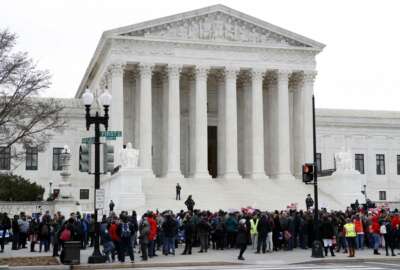
Take us to your leaders, fast
Guest columnists Steve Hellem and James Strock say the whole world is looking to Washington for leadership and does not like what it sees, prompting a potential...
Mike Causey is on vacation this week and asked several readers, friends and even critics to write guest columns in his absence. Please enjoy today’s offering from Steve Hellem, president of D.C. public affairs firm Navista, and James Strock, a former senior governmental official and author of “Disrupt Politics, Reset Washington”:
Where are the leaders in Washington? From Berlin to Tokyo, Los Angeles to Miami, heads are shaking. What is going on in America?
Their questions are not about Americans. We’re a universal people representing universal values through which everyone can see their own image, their own future. When the daring young people who occupied Tienanmen Square looked for inspiration against impossible odds, it was no accident that they turned to the Declaration of Independence.
The widespread concern is not about Americans or our values. It’s about the political leadership emanating from Washington, D.C.
Some believe the problem began after Jan. 20, 2017. Others would say things became acute after Jan. 20, 2009, or Jan. 20, 2001, or Jan. 20, 1993, or 1989. Pick your date but note that many, many Americans believe the challenges are not new.
Wherever you peg the problem, most of us can agree that there is one. The federal government has become a risk factor unto itself and the question arises: To whom do we turn for leadership?
People from various political persuasions holding high positions in successive administrations have not produced the necessary results. We habitually speak of presidents and cabinet secretaries and senators and congressmen as “leaders.” In fact, they may or may not be effective in serving us, in making change and influencing citizen sentiment in wise directions. They are all too often failing in their fundamental obligation to safeguard rising and future generations who rely upon us, but who cannot speak for themselves.
That missing leadership can be found in numerous places. One of the most important is so obvious that we can easily overlook it: our civil servants. They do the work, often unappreciated and taken for granted, that keeps the fundamental services moving on which millions of Americans rely.
When the people holding high positions fail to rise to the level of events, the role of federal workers becomes even more vital. We look to them to become leaders in their own right. They must keep their heads down and get the job done.
As with anyone taking on leadership responsibilities, they may well put themselves at risk. They might face retribution from political appointees. They might risk the wrath of public employee unions. Yet, in times of recognized crisis, it’s not enough to retreat into the apparent safety of bureaucratic anonymity.
All this may sound hopelessly idealistic. We all too often presume that things may not be working well, but they’ll continue indefinitely as they are. This is dangerous. It might well be unsustainable complacency, dangerous hubris from generations of safety and success in the post-World War II era.
We can no longer await people in high positions in Washington to lead. We’ve done that for years, for decades. It has not worked out. Now, as we look for alternative sources of leadership, shouldn’t we look to federal employees — not them alone, but as a key component?
That kind of thinking will make many people uncomfortable—including some federal employees themselves. But in a time when first principles are under fire, leaders will emerge from unexpected quarters. Those who would seek to keep their heads down, collecting their paychecks and pensions without incident need to understand that the status quo is not sustainable. If they refuse to put themselves at risk for the citizens they are sworn to serve, can they credibly criticize others who do the same?
Nearly Useless Factoid
By Amelia Brust
Despite its moniker, Hawaiian pizza is believed to have been invented in Ontario by Greek-Canadian restaurateur and cook Sam Panopoulos. He was reported as saying that while emigrating, he was introduced to pizza during a boat stop in Naples, Italy. Pizza was still relatively new to Canada when Panopoulos added pineapples and ham to his pies in 1962.
Source: CBC
Copyright © 2025 Federal News Network. All rights reserved. This website is not intended for users located within the European Economic Area.




